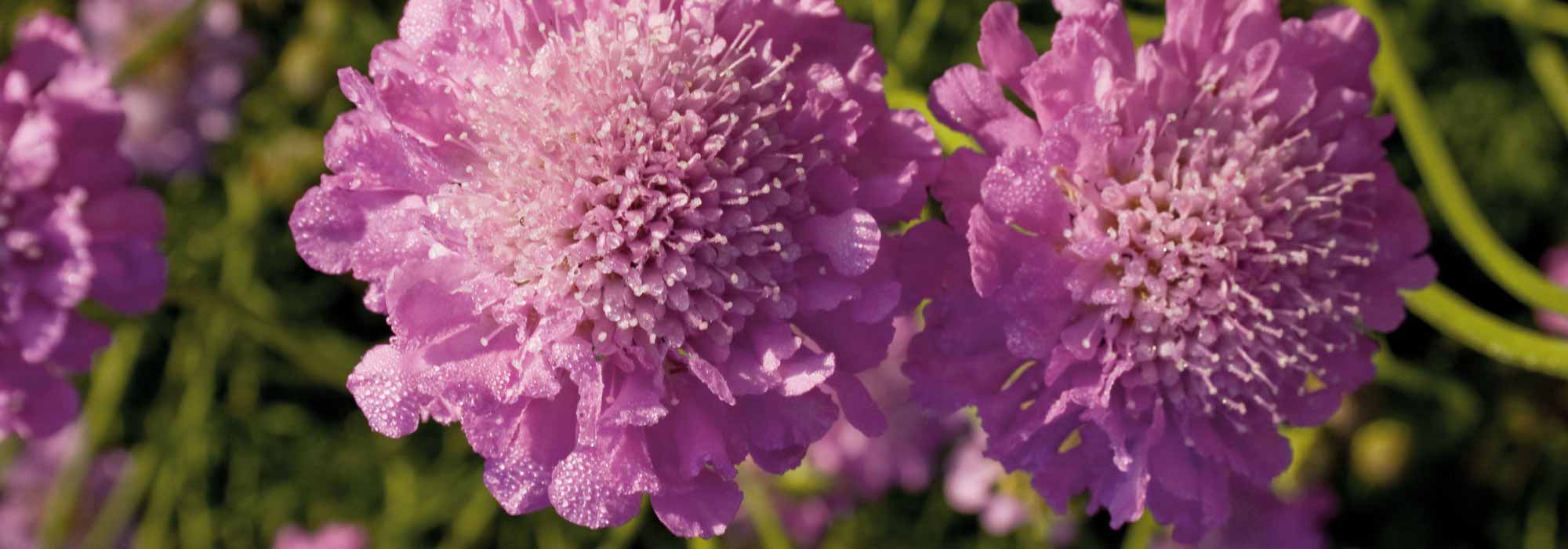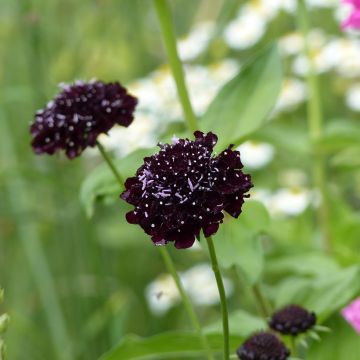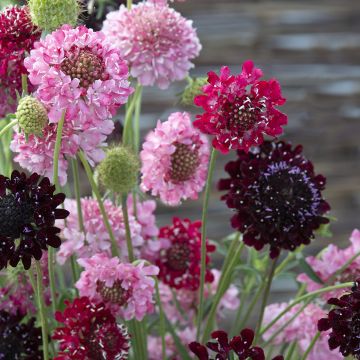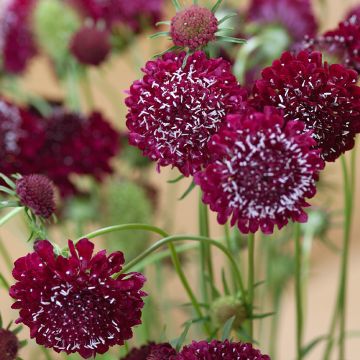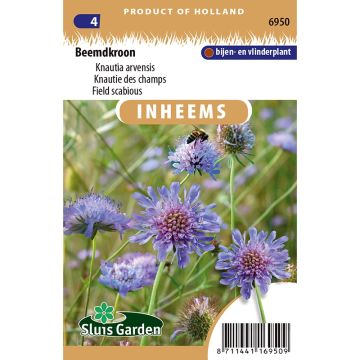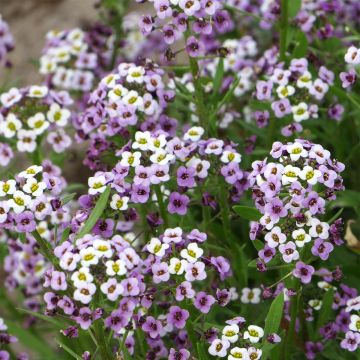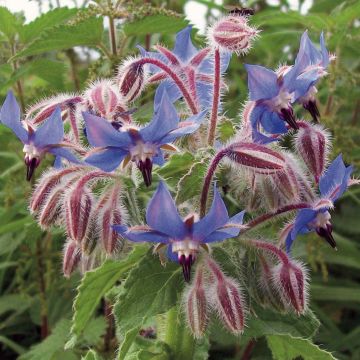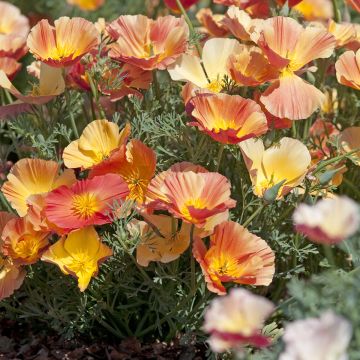

Lomelosia stellata - seeds
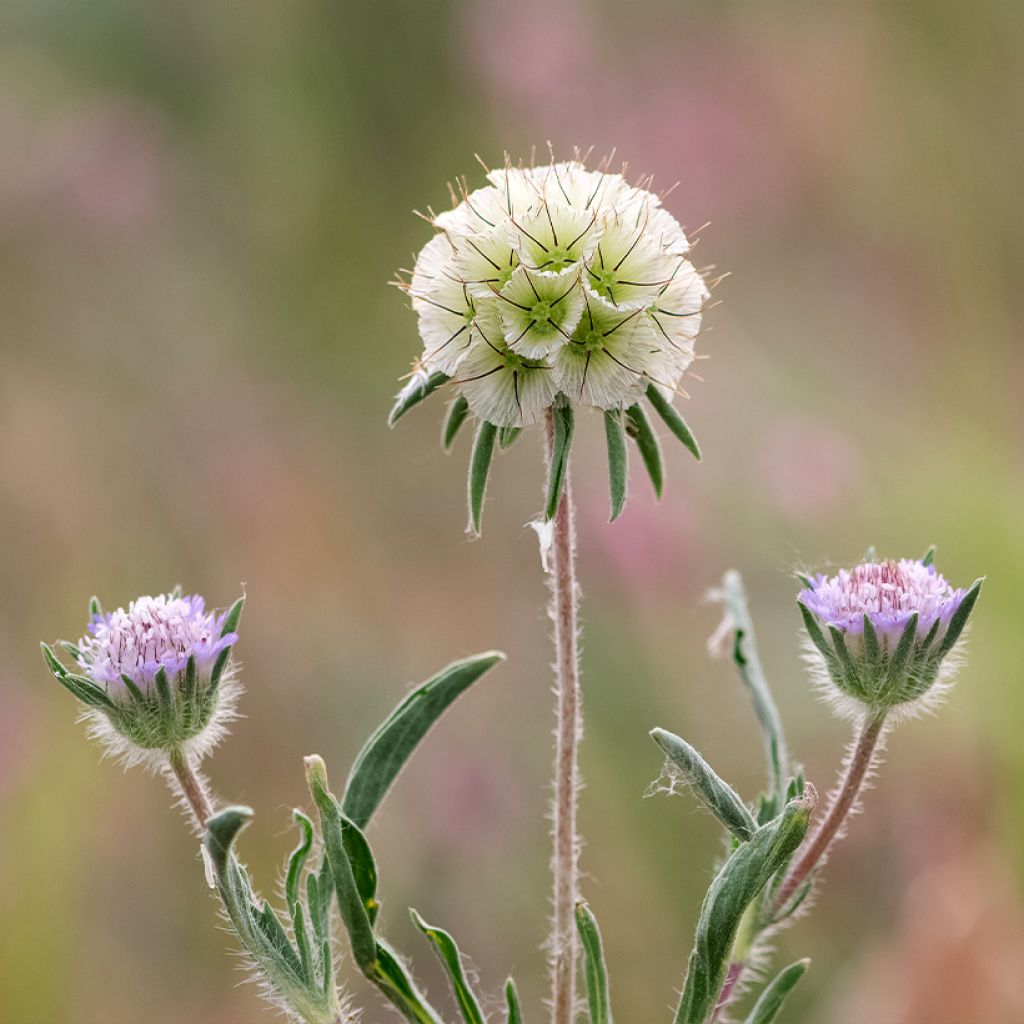

Lomelosia stellata - seeds
Lomelosia stellata - seeds
Lomelosia stellata
scabious
Special offer!
Receive a €20 voucher for any order over €90 (excluding delivery costs, credit notes, and plastic-free options)!
1- Add your favorite plants to your cart.
2- Once you have reached €90, confirm your order (you can even choose the delivery date!).
3- As soon as your order is shipped, you will receive an email containing your voucher code, valid for 3 months (90 days).
Your voucher is unique and can only be used once, for any order with a minimum value of €20, excluding delivery costs.
Can be combined with other current offers, non-divisible and non-refundable.
Home or relay delivery (depending on size and destination)
Schedule delivery date,
and select date in basket
This plant carries a 6 months recovery warranty
More information
We guarantee the quality of our plants for a full growing cycle, and will replace at our expense any plant that fails to recover under normal climatic and planting conditions.
Would this plant suit my garden?
Set up your Plantfit profile →
Description
Lomelosia stellata or Scabiosa stellata is an annual plant native to Southern Europe and enjoys the sun. It forms a low tuft of dark green, highly dissected leaves. In late spring, it produces long, slender stems, each carrying a small inflorescence in the shape of a dome, in pale blue or pale mauve. These fairly insignificant flowers then evolve into seeds that form a very sculptural, decorative sphere. They are used in dried bouquets to decorate the house. This species is easy to sow and appreciates limestone soils and warm, sunny climates.
Scabious plants are herbaceous, perennial or annual, belonging to the genera Scabiosa, Lomelosia, and Knautia, easily recognisable by their inflorescences in compact cymes, forming a flattened or slightly domed terminal head. Formerly classified in the Dipsacaceae family, they are now classified in the Caprifoliaceae family, like Honeysuckle, Weigela, or Abelia.
Lomelosia stellata is native to Spain and Portugal, Sardinia, and North Africa. It prefers well-drained, rather dry, limestone soils, and grows along paths or in uncultivated plots. It forms a low, 20 to 40 cm tall plant with variable foliage. The basal leaves form a rosette and are toothed or even incised, while those that develop higher up on the stems are pinnatisect, meaning they are cut to the base, thus forming separate leaflets. The few stems can be slightly branched, and the vegetation is dark green. From May or June until July or August, depending on the climate, small solitary flowers appear, carried by long, slender flower stalks that rise above the leaf tuft. The flowers are inflorescences, made up of very small flowers grouped in heads 2 to 3 cm in diameter. These hemispherical inflorescences are generally light blue to pale mauve. They are small and few, pretty but rather insignificant. The seed heads that form from the flowers after they have faded have real ornamental value. They are almost spherical with a perfect geometric structure, whose design could inspire many modern artists. These diaphanous beauties, with a somewhat indefinable colour, in shades of pale grey-pink, punctuated by a fine central star with five branches, press against each other to form an extremely decorative ball, perfect for making dried bouquets. This annual can thus extend its short life in our interiors during the winter...
The Starry Scabious is a charming botanical species with small light inflorescences. It needs a sunny exposure and preferably limestone soil, above all, well-drained, even dry, to develop well. Sow with seeds of Double Salmon Strawflower, which will give you beautiful flowers with a diameter of 5 cm, in an original salmon pink, and which are also suitable for use in dried bouquets. The Moody Blues Damask Nigella will also be a good companion, with flowers that bloom in a range of blues, from pale to intense, to enrich your dried flower compositions. You can also enhance your choice with annuals like Licilia Peach Moroccan Toadflax, which from June to September will delight you with its multicoloured flowering, combining yellow, orange, and brick red.
Flowering
Foliage
Plant habit
Botanical data
Lomelosia
stellata
Caprifoliaceae
scabious
Scabiosa stellata
Southern Europe
Other Scabiosa seeds
View all →Planting and care
The Starry Scabious is best sown under cover in a seed tray from March. If frost is still persistent in your region, wait until April, as these seeds will prefer a temperature of around 15 to 20°C. They will germinate within a period of ten to fifteen days.
Just cover the seeds with a thin layer (3 mm) kept slightly moist. When the young plants are large enough, transplant them into pots to allow them to grow in April. You can then plant them in the ground in May, once the risk of frost has passed. Watch out for snails and slugs.
You can also sow them directly in the ground from April, if your climate is mild, or in May if still cold. Loosen the soil and lightly bury the seeds, spacing them 15/20 cm apart. Once they have sprouted, you can thin them out by removing any excess plants. Choose a sunny location and slightly moist soil, but not heavy or waterlogged.
Sowing period
Intended location
Planting & care advice
This item has not been reviewed yet - be the first to leave a review about it.
Similar products
Haven't found what you were looking for?
Hardiness is the lowest winter temperature a plant can endure without suffering serious damage or even dying. However, hardiness is affected by location (a sheltered area, such as a patio), protection (winter cover) and soil type (hardiness is improved by well-drained soil).

Photo Sharing Terms & Conditions
In order to encourage gardeners to interact and share their experiences, Promesse de fleurs offers various media enabling content to be uploaded onto its Site - in particular via the ‘Photo sharing’ module.
The User agrees to refrain from:
- Posting any content that is illegal, prejudicial, insulting, racist, inciteful to hatred, revisionist, contrary to public decency, that infringes on privacy or on the privacy rights of third parties, in particular the publicity rights of persons and goods, intellectual property rights, or the right to privacy.
- Submitting content on behalf of a third party;
- Impersonate the identity of a third party and/or publish any personal information about a third party;
In general, the User undertakes to refrain from any unethical behaviour.
All Content (in particular text, comments, files, images, photos, videos, creative works, etc.), which may be subject to property or intellectual property rights, image or other private rights, shall remain the property of the User, subject to the limited rights granted by the terms of the licence granted by Promesse de fleurs as stated below. Users are at liberty to publish or not to publish such Content on the Site, notably via the ‘Photo Sharing’ facility, and accept that this Content shall be made public and freely accessible, notably on the Internet.
Users further acknowledge, undertake to have ,and guarantee that they hold all necessary rights and permissions to publish such material on the Site, in particular with regard to the legislation in force pertaining to any privacy, property, intellectual property, image, or contractual rights, or rights of any other nature. By publishing such Content on the Site, Users acknowledge accepting full liability as publishers of the Content within the meaning of the law, and grant Promesse de fleurs, free of charge, an inclusive, worldwide licence for the said Content for the entire duration of its publication, including all reproduction, representation, up/downloading, displaying, performing, transmission, and storage rights.
Users also grant permission for their name to be linked to the Content and accept that this link may not always be made available.
By engaging in posting material, Users consent to their Content becoming automatically accessible on the Internet, in particular on other sites and/or blogs and/or web pages of the Promesse de fleurs site, including in particular social pages and the Promesse de fleurs catalogue.
Users may secure the removal of entrusted content free of charge by issuing a simple request via our contact form.
The flowering period indicated on our website applies to countries and regions located in USDA zone 8 (France, the United Kingdom, Ireland, the Netherlands, etc.)
It will vary according to where you live:
- In zones 9 to 10 (Italy, Spain, Greece, etc.), flowering will occur about 2 to 4 weeks earlier.
- In zones 6 to 7 (Germany, Poland, Slovenia, and lower mountainous regions), flowering will be delayed by 2 to 3 weeks.
- In zone 5 (Central Europe, Scandinavia), blooming will be delayed by 3 to 5 weeks.
In temperate climates, pruning of spring-flowering shrubs (forsythia, spireas, etc.) should be done just after flowering.
Pruning of summer-flowering shrubs (Indian Lilac, Perovskia, etc.) can be done in winter or spring.
In cold regions as well as with frost-sensitive plants, avoid pruning too early when severe frosts may still occur.
The planting period indicated on our website applies to countries and regions located in USDA zone 8 (France, United Kingdom, Ireland, Netherlands).
It will vary according to where you live:
- In Mediterranean zones (Marseille, Madrid, Milan, etc.), autumn and winter are the best planting periods.
- In continental zones (Strasbourg, Munich, Vienna, etc.), delay planting by 2 to 3 weeks in spring and bring it forward by 2 to 4 weeks in autumn.
- In mountainous regions (the Alps, Pyrenees, Carpathians, etc.), it is best to plant in late spring (May-June) or late summer (August-September).
The harvesting period indicated on our website applies to countries and regions in USDA zone 8 (France, England, Ireland, the Netherlands).
In colder areas (Scandinavia, Poland, Austria...) fruit and vegetable harvests are likely to be delayed by 3-4 weeks.
In warmer areas (Italy, Spain, Greece, etc.), harvesting will probably take place earlier, depending on weather conditions.
The sowing periods indicated on our website apply to countries and regions within USDA Zone 8 (France, UK, Ireland, Netherlands).
In colder areas (Scandinavia, Poland, Austria...), delay any outdoor sowing by 3-4 weeks, or sow under glass.
In warmer climes (Italy, Spain, Greece, etc.), bring outdoor sowing forward by a few weeks.






























